-
EXECUTIVE SUMMARY
-
MARKET INTRODUCTION
-
Definition
-
Scope of the Study
- Research Objective
- Assumptions
- Limitations
-
RESEARCH METHODOLOGY
-
3.1.
-
Overview
-
Data Mining
-
Secondary Research
-
Primary Research
- Primary Interviews and Information Gathering Process
- Breakdown
-
of Primary Respondents
-
Forecasting Model
-
Market Size Estimation
- Bottom-Up Approach
- Top-Down Approach
-
Data Triangulation
-
Validation
-
MARKET DYNAMICS
-
Overview
-
Drivers
-
Restraints
-
Opportunities
-
MARKET FACTOR ANALYSIS
-
5.1.
-
Value Chain Analysis
-
Porter’s Five Forces Analysis
- Bargaining
- Bargaining Power of Buyers
- Threat of
- Threat of Substitutes
- Intensity of Rivalry
-
Power of Suppliers
-
New Entrants
-
COVID-19 Impact Analysis
- Market Impact Analysis
- Regional
- Opportunity and Threat Analysis
-
Impact
-
GLOBAL ALUMINUM FOIL
-
MARKET, BY PRODUCT
-
Overview
-
Wrapper Foils
-
Containers
-
Foils
-
Foil Lids
-
Pouches
-
Blister Packs
-
Others
-
GLOBAL ALUMINUM FOIL MARKET, BY END-USE
-
Overview
-
Packaging
-
Industrial
-
GLOBAL ALUMINUM FOIL MARKET, BY REGION
-
Overview
-
North America
- U.S.
- Canada
-
Europe
- France
- U.K
- Italy
- Spain
- Rest of Europe
-
8.3.1.
-
Germany
-
Asia-Pacific
- China
- India
- Japan
- South Korea
- Australia
- Rest of
-
Asia-Pacific
-
Rest of the World
- Middle East
- Africa
- Latin America
-
COMPETITIVE LANDSCAPE
-
Overview
-
9.2.
-
Competitive Analysis
-
Market Share Analysis
-
Major Growth Strategy
-
in the Global Aluminum Foil Market,
-
Competitive Benchmarking
-
9.6.
-
Leading Players in Terms of Number of Developments in the Global Aluminum Foil Market,
-
Key developments and Growth Strategies
- New PRODUCT Launch/End-Use
- Merger & Acquisitions
- Joint Ventures
- Sales & Operating Income, 2022
- Major Players R&D Expenditure. 2022
-
Deployment
-
9.8.
-
Major Players Financial Matrix
-
COMPANY PROFILES
-
10.1.
-
ACM Carcano
-
10.1.3.
-
Product Offered
-
10.1.6.
-
Key Strategies
-
Overview
-
10.2.5.
-
SWOT Analysis
-
10.3.1.
-
Company Overview
-
10.5.2.
-
Financial Overview
-
Ltd
-
Offered
-
Strategies
-
10.7.2.
-
Financial Overview
-
Offered
-
Strategies
-
Company Overview
-
Financial Overview
-
Key Developments
-
SWOT Analysis
-
Amcor
- Company Overview
- Financial
- Product Offered
- Key Developments
- Key Strategies
-
Assan Aluminyum
- Financial Overview
- Product Offered
- Key Developments
- SWOT Analysis
- Key Strategies
-
Ess Dee Aluminium
- Company Overview
- Financial Overview
- Product Offered
- Key Developments
- SWOT Analysis
- Key Strategies
-
Eurofoil
- Company Overview
- Product Offered
- Key Developments
- SWOT Analysis
- Key Strategies
-
Hindalco Industries
- Company Overview
- Financial Overview
- Product
- Key Developments
- SWOT Analysis
- Key
-
Huawei Aluminium
- Company Overview
- Product Offered
- Key Developments
- SWOT Analysis
- Key Strategies
-
Laminazione Sottile
- Company Overview
- Financial Overview
- Product
- Key Developments
- SWOT Analysis
- Key
-
Shanghai Metal Corporation
- Company Overview
- Financial Overview
- Product Offered
- Key Developments
- SWOT Analysis
- Key Strategies
-
APPENDIX
-
11.1.
-
References
-
Related Reports
-
-
LIST OF TABLES
-
TABLE
-
GLOBAL ALUMINUM FOIL MARKET, SYNOPSIS, 2025 - 2034
-
GLOBAL ALUMINUM
-
FOIL MARKET, ESTIMATES & FORECAST, 2025 - 2034 (USD BILLION)
-
GLOBAL
-
ALUMINUM FOIL MARKET, BY PRODUCT, 2025 - 2034 (USD BILLION)
-
GLOBAL
-
ALUMINUM FOIL MARKET, BY END-USE, 2025 - 2034 (USD BILLION)
-
NORTH AMERICA
-
ALUMINUM FOIL MARKET, BY PRODUCT, 2025 - 2034 (USD BILLION)
-
NORTH AMERICA
-
ALUMINUM FOIL MARKET, BY END-USE, 2025 - 2034 (USD BILLION)
-
NORTH AMERICA
-
ALUMINUM FOIL MARKET, BY COUNTRY, 2025 - 2034 (USD BILLION)
-
U.S. ALUMINUM
-
FOIL MARKET, BY PRODUCT, 2025 - 2034 (USD BILLION)
-
U.S. ALUMINUM FOIL
-
MARKET, BY END-USE, 2025 - 2034 (USD BILLION)
-
CANADA ALUMINUM FOIL
-
MARKET, BY PRODUCT, 2025 - 2034 (USD BILLION)
-
CANADA ALUMINUM FOIL
-
MARKET, BY END-USE, 2025 - 2034 (USD BILLION)
-
EUROPE ALUMINUM FOIL
-
MARKET, BY PRODUCT, 2025 - 2034 (USD BILLION)
-
EUROPE ALUMINUM FOIL
-
MARKET, BY END-USE, 2025 - 2034 (USD BILLION)
-
EUROPE ALUMINUM FOIL
-
MARKET, BY COUNTRY, 2025 - 2034 (USD BILLION)
-
GERMANY ALUMINUM FOIL
-
MARKET, BY PRODUCT, 2025 - 2034 (USD BILLION)
-
GERMANY ALUMINUM FOIL
-
MARKET, BY END-USE, 2025 - 2034 (USD BILLION)
-
FRANCE ALUMINUM FOIL
-
MARKET, BY PRODUCT, 2025 - 2034 (USD BILLION)
-
FRANCE ALUMINUM FOIL
-
MARKET, BY END-USE, 2025 - 2034 (USD BILLION)
-
ITALY ALUMINUM FOIL
-
MARKET, BY PRODUCT, 2025 - 2034 (USD BILLION)
-
ITALY ALUMINUM FOIL
-
MARKET, BY END-USE, 2025 - 2034 (USD BILLION)
-
SPAIN ALUMINUM FOIL
-
MARKET, BY PRODUCT, 2025 - 2034 (USD BILLION)
-
SPAIN ALUMINUM FOIL
-
MARKET, BY END-USE, 2025 - 2034 (USD BILLION)
-
U.K ALUMINUM FOIL MARKET,
-
BY PRODUCT, 2025 - 2034 (USD BILLION)
-
U.K ALUMINUM FOIL MARKET, BY
-
END-USE, 2025 - 2034 (USD BILLION)
-
REST OF EUROPE ALUMINUM FOIL MARKET,
-
BY PRODUCT, 2025 - 2034 (USD BILLION)
-
REST OF EUROPE ALUMINUM FOIL
-
MARKET, BY END-USE, 2025 - 2034 (USD BILLION)
-
ASIA PACIFIC ALUMINUM
-
FOIL MARKET, BY PRODUCT, 2025 - 2034 (USD BILLION)
-
ASIA PACIFIC ALUMINUM
-
FOIL MARKET, BY END-USE, 2025 - 2034 (USD BILLION)
-
ASIA PACIFIC ALUMINUM
-
FOIL MARKET, BY COUNTRY, 2025 - 2034 (USD BILLION)
-
JAPAN ALUMINUM
-
FOIL MARKET, BY PRODUCT, 2025 - 2034 (USD BILLION)
-
JAPAN ALUMINUM
-
FOIL MARKET, BY END-USE, 2025 - 2034 (USD BILLION)
-
CHINA ALUMINUM
-
FOIL MARKET, BY PRODUCT, 2025 - 2034 (USD BILLION)
-
CHINA ALUMINUM
-
FOIL MARKET, BY END-USE, 2025 - 2034 (USD BILLION)
-
INDIA ALUMINUM
-
FOIL MARKET, BY PRODUCT, 2025 - 2034 (USD BILLION)
-
INDIA ALUMINUM
-
FOIL MARKET, BY END-USE, 2025 - 2034 (USD BILLION)
-
AUSTRALIA ALUMINUM
-
FOIL MARKET, BY PRODUCT, 2025 - 2034 (USD BILLION)
-
AUSTRALIA ALUMINUM
-
FOIL MARKET, BY END-USE, 2025 - 2034 (USD BILLION)
-
SOUTH KOREA ALUMINUM
-
FOIL MARKET, BY PRODUCT, 2025 - 2034 (USD BILLION)
-
SOUTH KOREA ALUMINUM
-
FOIL MARKET, BY END-USE, 2025 - 2034 (USD BILLION)
-
REST OF ASIA-PACIFIC
-
ALUMINUM FOIL MARKET, BY PRODUCT, 2025 - 2034 (USD BILLION)
-
REST OF
-
ASIA-PACIFIC ALUMINUM FOIL MARKET, BY END-USE, 2025 - 2034 (USD BILLION)
-
TABLE
-
REST OF WORLD ALUMINUM FOIL MARKET, BY PRODUCT, 2025 - 2034 (USD BILLION)
-
REST OF WORLD ALUMINUM FOIL MARKET, BY END-USE, 2025 - 2034 (USD BILLION)
-
REST OF WORLD ALUMINUM FOIL MARKET, BY COUNTRY, 2025 - 2034 (USD BILLION)
-
MIDDLE EAST ALUMINUM FOIL MARKET, BY PRODUCT, 2025 - 2034 (USD BILLION)
-
MIDDLE EAST ALUMINUM FOIL MARKET, BY END-USE, 2025 - 2034 (USD BILLION)
-
AFRICA ALUMINUM FOIL MARKET, BY PRODUCT, 2025 - 2034 (USD BILLION)
-
AFRICA ALUMINUM FOIL MARKET, BY END-USE, 2025 - 2034 (USD BILLION)
-
LATIN AMERICA ALUMINUM FOIL MARKET, BY PRODUCT, 2025 - 2034 (USD BILLION)
-
LATIN AMERICA ALUMINUM FOIL MARKET, BY END-USE, 2025 - 2034 (USD BILLION)
-
-
LIST OF FIGURES
-
RESEARCH PROCESS
-
MARKET
-
STRUCTURE FOR THE GLOBAL ALUMINUM FOIL MARKET
-
MARKET DYNAMICS FOR
-
THE GLOBAL ALUMINUM FOIL MARKET
-
GLOBAL ALUMINUM FOIL MARKET, SHARE
-
(%), BY PRODUCT, 2022
-
GLOBAL ALUMINUM FOIL MARKET, SHARE (%), BY END-USE,
-
GLOBAL ALUMINUM FOIL MARKET, SHARE (%), BY REGION, 2022
-
FIGURE
-
NORTH AMERICA: ALUMINUM FOIL MARKET, SHARE (%), BY REGION, 2022
-
FIGURE 8
-
EUROPE: ALUMINUM FOIL MARKET, SHARE (%), BY REGION, 2022
-
ASIA-PACIFIC:
-
ALUMINUM FOIL MARKET, SHARE (%), BY REGION, 2022
-
REST OF THE WORLD:
-
ALUMINUM FOIL MARKET, SHARE (%), BY REGION, 2022
-
GLOBAL ALUMINUM
-
FOIL MARKET: COMPANY SHARE ANALYSIS, 2022 (%)
-
ACM CARCANO: FINANCIAL
-
OVERVIEW SNAPSHOT
-
ACM CARCANO: SWOT ANALYSIS
-
AMCOR:
-
FINANCIAL OVERVIEW SNAPSHOT
-
AMCOR: SWOT ANALYSIS
-
ASSAN
-
ALUMINYUM: FINANCIAL OVERVIEW SNAPSHOT
-
ASSAN ALUMINYUM: SWOT ANALYSIS
-
ESS DEE ALUMINIUM: FINANCIAL OVERVIEW SNAPSHOT
-
ESS DEE
-
ALUMINIUM: SWOT ANALYSIS
-
EUROFOIL.: FINANCIAL OVERVIEW SNAPSHOT
-
EUROFOIL.: SWOT ANALYSIS
-
HINDALCO INDUSTRIES LTD: FINANCIAL
-
OVERVIEW SNAPSHOT
-
HINDALCO INDUSTRIES LTD: SWOT ANALYSIS
-
FIGURE
-
HUAWEI ALUMINIUM: FINANCIAL OVERVIEW SNAPSHOT
-
HUAWEI ALUMINIUM:
-
SWOT ANALYSIS
-
LAMINAZIONE SOTTILE: FINANCIAL OVERVIEW SNAPSHOT
-
LAMINAZIONE SOTTILE: SWOT ANALYSIS
-
SHANGHAI METAL CORPORATION:
-
FINANCIAL OVERVIEW SNAPSHOT
-
SHANGHAI METAL CORPORATION: SWOT ANALYSIS

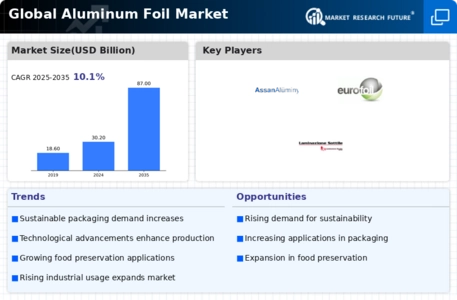

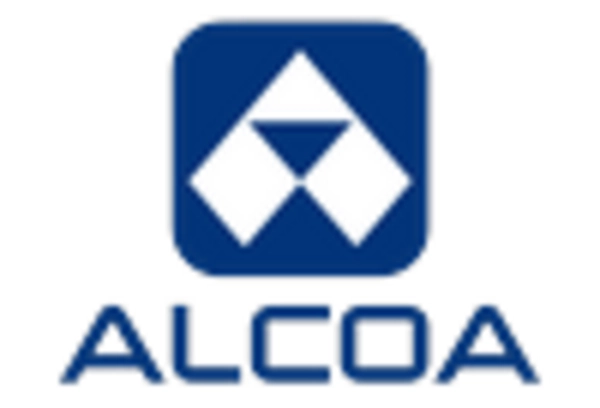
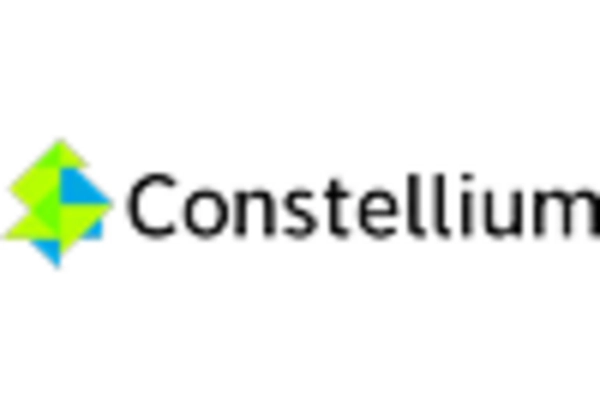
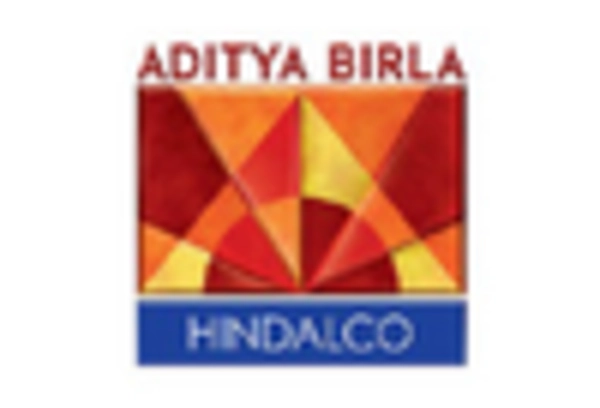
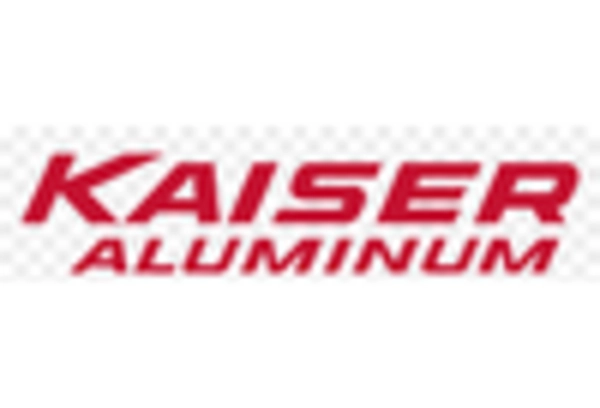
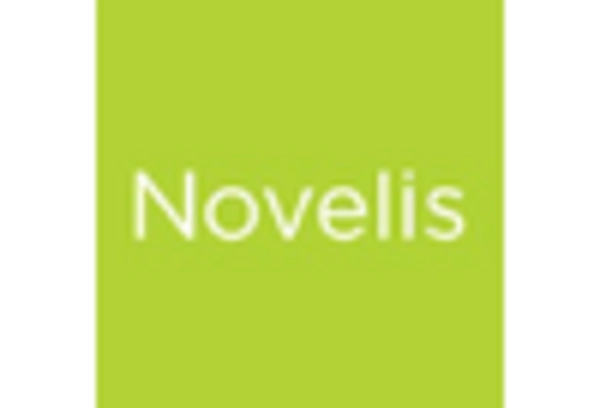
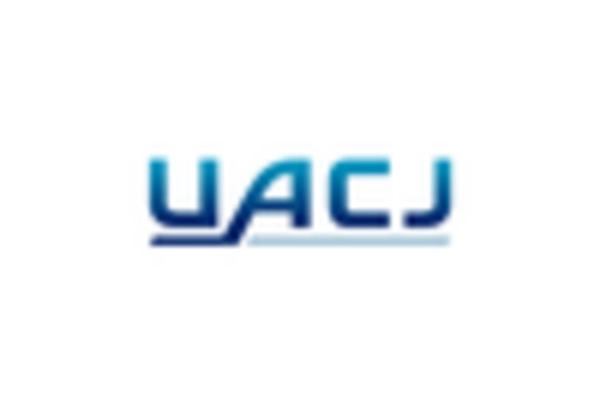

Leave a Comment